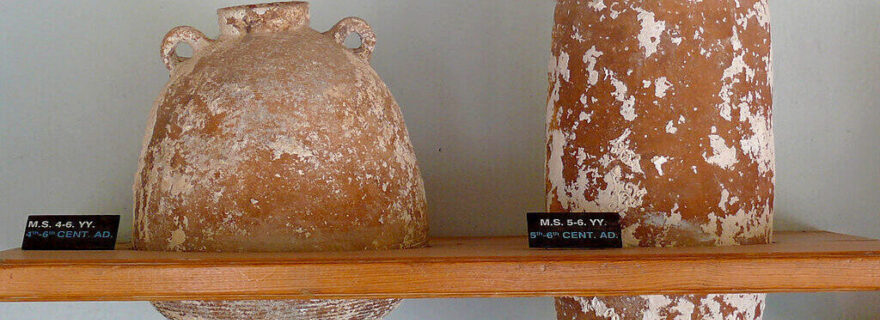Wine trade from the Holy Land
Palestinian wines were praised and consumed across western Europe. Transport containers found in Jerusalem, likely used to carry these wines, are stored in the depot at the Faculty of Archaeology. What can these amphorae tell us about connectivity across the Mediterranean in the early Middle Ages?
This blog post is based on Vera van Heel's BA thesis, supervised by prof. dr. Joanita Vroom and Mink van IJzendoorn, titled: 'Distribution patterns of Late Roman Amphora types 4, 5 and 6 in Jerusalem, Palestine and the wider Mediterranean between the 1st and 9th centuries CE'.
In older excavations, post-Roman periods have often been understudied. Going back to old excavation material can provide a wealth of new and necessary information that can update our understanding of the past. As the Jerusalem material from the Leiden depot will show, by dusting off old boxes, going through dozens of find bags, and deciphering old handwritten documentation, a better understanding of the transition from Late Antiquity into the early Middle Ages might just become visible…
Despite breaking easily, ceramics survive extremely well in the archaeological record. Ceramic transport containers, also known as amphorae, have been an essential tool for studying economic interactions. Maritime trade across the Mediterranean Sea started as early as the 4th millennium BCE, and of course continues to this day. Historically, wine and oil were the leading cargoes, but cereals, textiles, salt, fish products and various raw materials have also been important.
Boxes of sherds
The collection at the Leiden depot is a legacy from Professor H.J. Franken (1917-2005), who analysed the ceramic finds from excavations in Jerusalem from the 1960s. At the time, the excavators were especially interested in biblical Jerusalem. Nevertheless, hundreds of sherds from Late Antiquity and the early Middle Ages were collected too, ranging from oil lamps to cooking vessels.
Amphorae provide a wonderful proxy for connectivity and trade since they were used to ship and carry large quantities of goods over large distances. Therefore, when going through the late antique and early medieval material from Jerusalem in the depot, I was specifically looking for large storage jars and amphorae. More specifically, I was trying to identify the so-called ‘Late Roman Amphora’ types, which were used to carry the renowned Palestinian wines that were known to be traded all around the Mediterranean in the first millennium CE (fig. 1).
The Palestinian amphorae were in use roughly between the 1st and 9th centuries CE – which makes the name “Late Roman” slightly misleading. Even though manufacture started under Roman rule, production continued under the Byzantine period, as well as under control of the Rashidun, Umayyad and ‘Abbasid caliphates. Political and religious changes in the region apparently did not halt the production process.
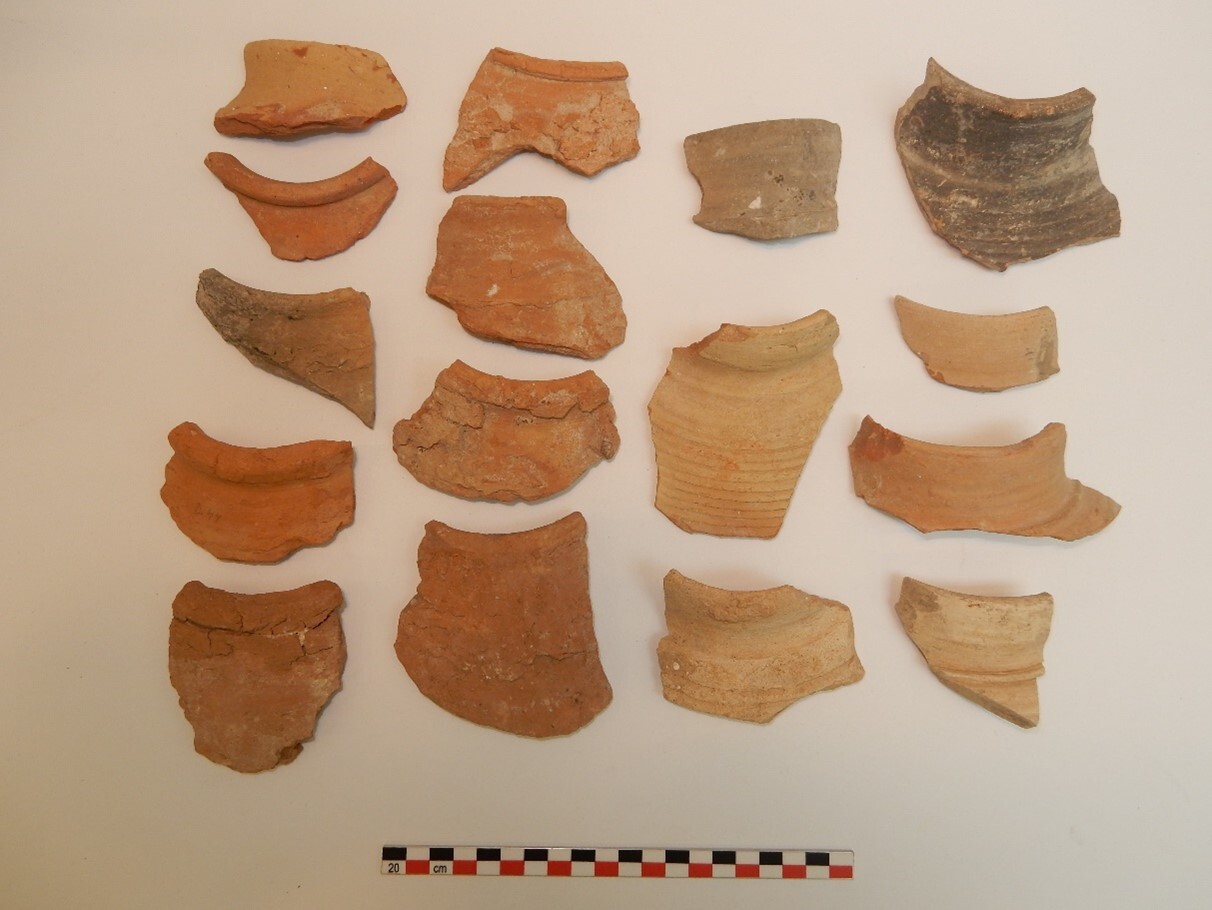
Fig. 1: Palestinian Late Roman Amphora sherds from the Leiden depot (photo by author).
Decline, darkness and depression?
As we now know, the Late Roman Amphorae were in use and distributed during the transition from Late Antiquity into the early Middle Ages. Traditionally, this transition has been viewed as one of decline, darkness and depression. In the eastern Mediterranean, natural disasters struck, there were plague outbreaks and Islamic incursions swept over regions previously under Roman and Byzantine control. Scholars have considered these developments crucial for what has been coined the ‘Early Medieval Depression’ of the 7th century CE. This depression, perhaps the true watershed between Antiquity and the Middle Ages, appeared to have solidified a trend that had set in during Late Antiquity already. Areas all across the basin became more and more rural and regional in character, and connectivity between the eastern and western Mediterranean was believed to have effectively dropped.
Persistent conceptions around how the Palestinian amphorae were used reflect notions of regionalisation and decline too. In total, three distinct types can be identified (fig. 2): Late Roman Amphora 4 (LRA4), Late Roman Amphora 5 (LRA5) and Late Roman Amphora 6 (LRA6). The larger LRA4 vessel has traditionally been associated with long-distance overseas trade, whereas the smaller LRA5/6 have been linked with regional and overland commerce. This divide has largely been based on shape: the cylindrical LRA4 has been deemed more easily stackable compared to the bag-shaped LRA5/6. Yet, the presence of the LRA5/6 on the island of Cyprus, and pictorial evidence for camels carrying LRA4 vessels (fig. 3), clearly poke holes into the reality of such a rigid divide.
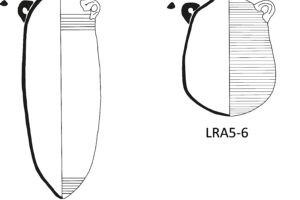

Relatively speaking?
When looking at the Palestinian find locations of the Late Roman Amphorae one can see why such a maritime vs terrestrial divide was initially made. The LRA4, not surprisingly also known as Gaza jar, was found primarily in the Gaza and coastal regions. The LRA5/6 had a more inland distribution (fig. 4). Similarly, Mediterranean distributions, based on the work by Dominique Pieri (2005), show that the LRA4 can be found especially in western Europe and the Black Sea region. Exports even reached as far west as the British Isles. On the other hand, the LRA5/6 have a much higher distribution in the Levant: Syria, Lebanon and Jordan. Nonetheless, just knowing the find locations still does not tell us anything about the number of vessels occurring or the time period when the vessel was used.
Based on the Leiden depot material, the LRA5 is the most frequently occurring Late Roman Amphora in Jerusalem. This is followed by the LRA4, and only lastly we find the LRA6. Interestingly, recent publications on the coastal site of Apollonia, modern-day Israel, show the same pattern. Despite being a coastal site, the ‘terrestrial’ LRA5 is most abundantly found here too. Over a quarter of the total ceramics assemblage consisted of Palestinian Late Roman Amphorae, showing how common the vessels must have been on site. Even in Marseille, modern-day France, the number of LRA4 and LRA5/6 finds do not differ significantly from each other.
What about occurrence over time? Can we see significant changes around the 7th century CE? This is difficult to establish for the Jerusalem collection since a lot of information on the find context is unclear or lost. However, at coastal Apollonia the majority of the LRA ceramics date between the 5th and 7th centuries CE. Mediterranean-wide, we can see that the LRA4 falls out of circulation after the 7th century CE, whereas the LRA5/6 do remain in distribution for roughly another two more centuries.
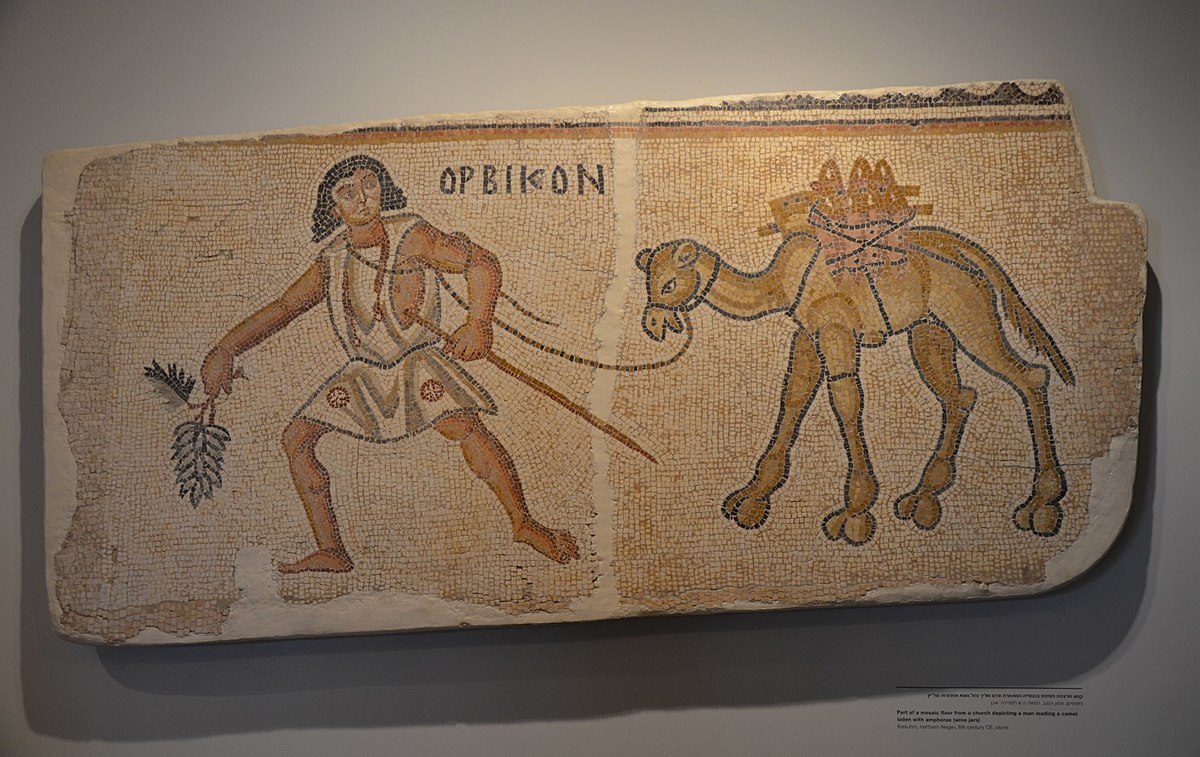
Transformations?
Depending on whether we look at the spatial, temporal and relative distributions – where, when and how many – different degrees of trade connectivity become visible.
The Palestinian Late Roman Amphora types often co-occur at major cities, trading hubs and ports. As we have seen, at these sites there is no significant difference in number between the ‘terrestrial’ and the ‘maritime’ vessel type. However, distributions do show that both vessels were involved in different trade routes commencing from these major hubs. Only the LRA4 can be found in inland France, for example, whereas the LRA5/6 can be found reaching deeper into the Levantine interior.
Following the narrative of decline and regionalisation, one would expect to over time find fewer and fewer evidence for eastern Mediterranean amphorae in the West. This decline is true to a certain extent: after the 7th century CE, the larger LRA4 indeed falls out of circulation. Though this is not a total decline, since the LRA5/6 do continue to be exported. Regionalisation too can be seen in the fact that Egyptian “copies” of the LRA5 come into existence. Then again, is this really suggestive of a decline in trade connections with Palestine? Or is it perhaps an indication of the popularity of Palestinian wine through practices of emulation?
Certainly, changes in the amphora distribution took place around in the 7th century CE. Palestinian wines, enjoyed by courts and congregations all around the Mediterranean, were now exported in fewer numbers and smaller quantities. Nevertheless, Palestinian wine trade did most definitely continue. Between the 7th and 9th centuries CE, it were the LRA5/6 amphorae that seemed favourable and better catered to the needs of the people.
Based on the continued export, the LRA5/6 must have fulfilled certain needs that the larger LRA4 vessels or local products could not fulfil. This could be based on a plethora of reasons, including changes in agricultural practices or political leadership. Indeed, the continuation of the LRA5/6 for at least two centuries after the 7th century ‘Early Medieval Depression’, to me suggest a transformation and a catering to changing needs rather than economic decline.
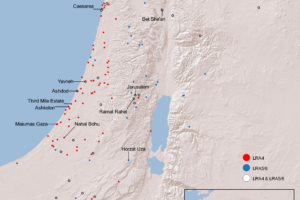

Old materials, new interpretations
It took some metaphorical digging, but the Jerusalem ceramics from the Leiden depot have provided an example of how the re-evaluation of older material may help to nuance existing views on the early Middle Ages. Of course, the story the Late Roman Amphorae tell are only a fragment of a much larger and complex story. Even so, it can be said that, despite all the socio-political changes during the early Middle Ages, the amphora fragments attest that degree of connectivity across the Mediterranean always remained. Palestinian wine trade may have transformed, but it never ceased. Speaking of this period in terms of decline only further perpetuates the view of the ‘Dark Ages’.
Further reading
Franken, H.J., 2005. A History of Potters and Pottery in Ancient Jerusalem: Excavations by K.M. Kenyon in Jerusalem 1961-1967. London: Equinox.
Horden, P. and N. Purcell, 2000. The Corrupting Sea: A Study of Mediterranean History. Oxford: Blackwell.
Kingsley, S.A., 1995. Bag-Shaped Amphorae and Byzantine Trade: Expanding Horizons. Bulletin of the Anglo-Israel Archaeological Society 14, 39-56.
Morrisson, C. 2012 (ed). Trade and Markets in Byzantium. Washington (DC): Dumbarton Oak Research Library and Collection.
Pieri, D., 2005. Le commerce du vin oriental à l’époque Byzantine. Beirut: Bibliothèque d’Archéologie et d’Histoire. Institut Français du Proche Orient.
Taxel, I, 2020. Pottery, in O. Tal (ed), Apollonia-Arsuf: Final Report of the Excavation. Volume II: Excavations Outside the Medieval Town Walls. Tel Aviv: The Institute of Archaeology, 91-151.
University of Southampton, 2014. Roman Amphorae: A Digital Resource [data-set]. York: Archaeology Data Service. https://doi.org/10.5284/1028192
Vroom, J., 2005. Byzantine to Modern Pottery in the Aegean: 7th to 20th Century: An Introduction and Field Guide. Utrecht: Parnassus Press.
Wickham, C., 2005. Framing the Early Middle Ages. Europe and the Mediterranean, 400-800. Oxford: Oxford University Press.
Vera van Heel and Leiden Medievalists Blog, 2022. Unauthorised use and/or duplication of this material without express and written permission from this site’s author and/or owner is strictly prohibited. Excerpts and links may be used, provided that full and clear credit is given to Vera van Heel and Leiden Medievalists Blog with appropriate and specific direction to the original content.


